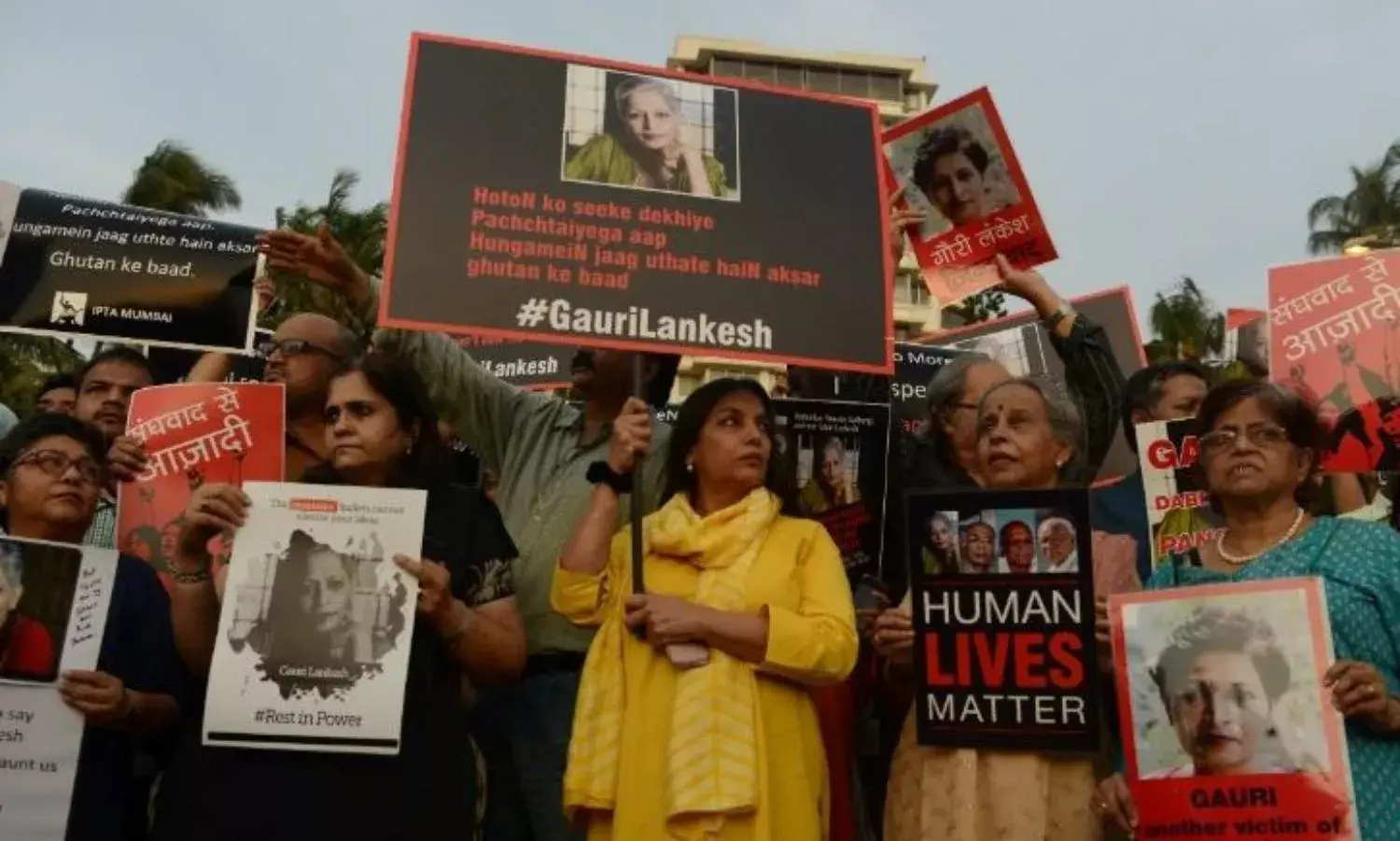Here is Why India Has Slipped Down the Press Freedom Index
A matter of shame;

On this World Press Freedom Day(3rd May) three instances from the last fortnight haunt me repeatedly.
A quote attributed to journalist Rana Ayyub went viral after Kathua and Unnao, where she is supposedly defending child rapists. Of course the quote was fake. But as it happens with most fake news, it went viral like a forest fire. Abuse on social media isn’t new for Ayub. But this time around, it reached a new low. She was threatened with rape, her photo was morphed.
Ravish Kumar wrote a Facebook post condemning what happened with Rana Ayub. He too was abused on WhatsApp and phone calls after his number was made public. Even after Ravish divulged the numbers harassing him, authorities have still not taken any action.
And the third instance pertains to an editor from Bastar. Kamal Shukla, who edits a weekly “Bhoomkal Samachar” committed the sin of sharing a cartoon critical of the Supreme Court judgement on Loya. He has been charged with sedition.
These three developments are enough to explain why India has slipped from 136 to 138 in the Press Freedom Index. Reporters Without Frontiers’ report puts India only ahead of countries like Pakistan, Iran, Iraq, China and the likes. For a country that boasts of being the largest democracy, it is a shameful tag to carry.
Of course, one cannot pin the entire blame on the current government. Even during the tenure of Jawaharlal Nehru, the press did have frosty moments with the government, but Pandit ji always stood by press freedom. However, Indira Gandhi inflicted the first real wound by enforcing the emergency. But after a resounding defeat, she came around. It was followed by Rajiv Gandhi’s defamation bill to suffocate journalists, but he too had to step back after a backlash. And now we have the Modi government that has made press its biggest enemy. Interestingly, all the three governments mentioned above have had entire majority.
However, where the Modi government stands out is the brazen celebration and justification of curtailing the freedom of the press through coinages like news traders and presstitutes. Modi has long held a grudge against the media, for he believes he has been treated unfairly since 2002. And as a result, he has not held a single press conference and the interviews he has given have been palpably scripted.
To teach media a lesson that refused to fall in line, Modi-led BJP used social media as a tool to defame and victimise journalists. Swati Chaturvedi’s book “I Am A Troll” documents that.
What Rana Ayub or Ravish have been enduring is what is experienced by most prominent media personalities like Barkha Dutt, Sagarika Ghose, Rohini Singh, Neha Dixit and so on. Female journalists are especially targeted below the belt. Among the male journalists, Rajdeep Sardesai, Siddharth Vardarajan, Kumar Ketkar and many more are their favourites. Sardesai was even physically attacked in the United States. I have myself experienced that poison for the past five years on Twitter. A fake profile of mine had tweeted “I will walk nude if Modi becomes PM.” And even today, this tweet crops up when I criticise the Modi government.
The viciousness of this government towards the media is unprecedented. Not to forget the recently issued and withdrawn circular on fake news by I and B minister Smriti Irani and her stand about digital media. In spite of the targeted harassment, brave journalists have weathered it and continued their work.
But Gauri Lankesh couldn’t even do that. The radical forces emboldened after this government came to power are alleged to have killed her. The silver lining is that the murder at least triggered outrage. But what about the journalist working in regional languages? 12 of them have been killed in the past year. Bihar’s Rajiv Ranjan, Tripura’s Shantanu Bhaumik, Sai Reddy from Chattisgarh were among the ones briefly discussed. Others merely faded into the oblivion.
Rural journalists, on the one hand is fighting the government, and on the other, has to deal with corrupt law and order officials. They are exposed from all the sides. In fact, the accusation is that Jagendra Singh was burnt alive by the police.
Over the past three years, 90 journalists were attacked, according an official response in Rajya Sabha . A committee in Maharashtra that tracks such attacks says 218 of them have transpired only in Maharashtra. I have been at the receiving end of Narayan Rane and Shiv Sena’s goons on number of occasions. Maharashtra, interestingly, is the first state to have enforced the law protecting journalists. But it is awaiting the president’s signature.
The tragedy is that life of a media person in India has become cheap. And when he or she isn’t killed, they are threatened with defamation cases and Rs 100 crore suits. Caravan and Wire are recent examples. Sanatan Santha has recently charged me with two Rs 11 crore cases in Goa. Smita Thackeray’s 20 year old claim against me is still going on. Knowing the cases last forever in India, they have become a tool to squeeze out every ounce of journalists determination.
Moving on from journalists, media owners are being bought and how. In the past four years, Modi has located their missing spine well. Just look at the the editors and reporters who have lost their jobs after the new government came to power. Plus, ads worth a lot of money are another incentive to be spineless. Front pages of newspapers are commonly sold to big advertisers.
Overall, the forecast is claustrophobic for independent press. But digital media has thrown up a lifeline for those with a spine. And it can only thrive on the backing of the society at large. There are still enough journalists out there with a spine. They won’t throw in the towel just yet.

